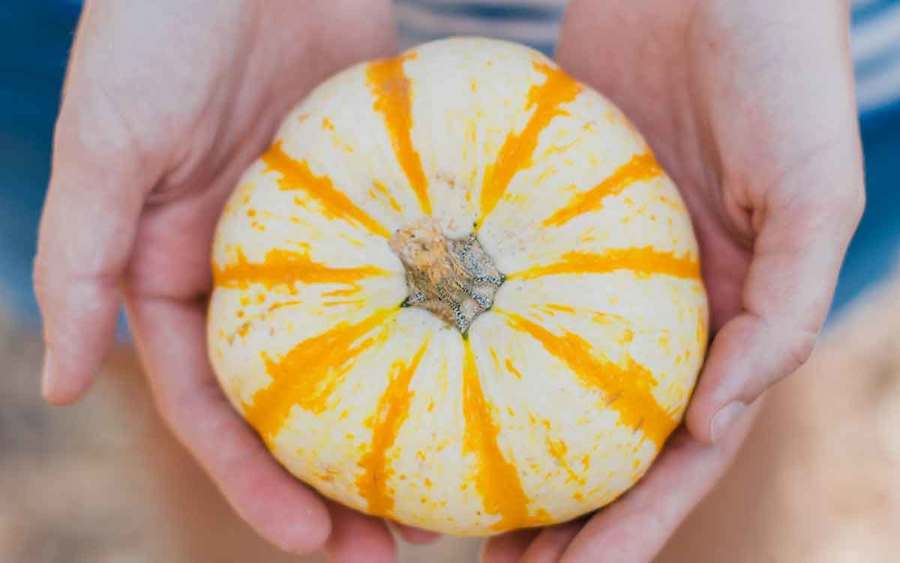10 Superfoods You Can Grow In Your Garden
These nutrient-rich fruits and veggies are good for your health

These nutrient-rich fruits and veggies are good for your health
Superfoods are healthy foods that are full of nutrients that can help improve your health. They are fruits and vegetables and other foods that are packed with vitamins, minerals and antioxidants that are good for you.
Superfoods can boost your immune system, help with digestion and keep your heart healthy. Some superfoods can also reduce inflammation and fight diseases.
You can find superfoods at local grocery stores and farmer’s markets, but did you know you can grow many of them right in your own garden? Growing superfoods in your garden is easier than you might think and can be a rewarding experience.
“Growing your own fruits and vegetables not only ensures you have fresh, organic produce, but it also allows you to reap the mental and physical health benefits of gardening,” says Jennifer Park, DO, an internal medicine physician at Scripps Clinic Carmel Valley. “Planting seeds, watching them grow, and harvesting teaches patience, care and respect for the environment.”
10 superfoods for your garden
Here are 10 nutrient-dense fruits and vegetables that are easy to grow and are good for your health.
Each of these superfoods has its own growing requirements. But with a little care and attention, you can enjoy a healthy harvest from your own garden.
Blueberries

Blueberries
Blueberries are packed with antioxidants, which help protect cells from damage. Studies have shown they may be especially beneficial in fighting colon cancer and prostate cancer.
Kale

Kale
The vitamin K in kale and other leafy greens helps protect your heart from a condition in which the left ventricle becomes enlarged and the heart can’t pump as effectively as it should.
Garlic and onions

Garlic and onions
Garlic and onions can help lower inflammation, a hidden health hazard that contributes to numerous conditions, including heart disease, colon cancer, and Alzheimer’s disease.
Spinach

Spinach
Spinach is good for your eyes. It contains plant compounds that can improve eye health. These compounds also protect against age-related macular degeneration.
Beans

Beans
Legumes slow down the body’s absorption of sugar, which is important for people with diabetes.
Citrus fruits

Citrus fruits
One study found the antioxidants in citrus fruits could stave off obesity-related diseases.
Avocado

Avocado
Avocados contain healthy fats that help keep cholesterol under control. Their vitamin K is good for bone health.
Broccoli

Broccoli
Studies have shown that the sulforaphane in broccoli may mitigate some of the damage caused by type 2 diabetes in obese adults, and help to prevent cancer.
Tomatoes

Tomatoes
Researchers have linked the lycopene in tomatoes to a reduced risk of several types of cancer. It’s also associated with a lower risk of cardiovascular disease.
How to grow superfoods
Healthy soil leads to healthy plants so prepare your soil before planting superfoods. You don’t need a large garden. If you have a small outdoor space, you can grow most superfoods in pots or containers.
Most superfoods need a sunny spot to grow well. Sunlight is essential for photosynthesis, the process plants use to convert sunlight into energy.
Choose a spot in your garden that gets at least six hours of sunlight each day. If you’re growing in pots, you can move them around to catch the sun.
Each plant has its own ideal harvest time. Harvest superfoods like leafy greens when they are young and tender. Berries are ready when fully colored and easily come off the stem.
New gardeners can learn how to grow superfoods from classes, books, YouTube, online courses, workshops and gardening clubs.
Incorporating superfoods into your diet
Adding home-grown superfoods to your diet can be very fulfilling. Not only are they packed with nutrients, but they also taste fresher and more flavorful than store-bought alternatives. You can say they are the stars of many healthy eating patterns, including the Mediterranean and paleo diets.
You can use leafy greens in salads, smoothies, or as a side dish. Root vegetables, such as onions and garlic, can be roasted, boiled, or used in soups and stews. Berries can be eaten fresh, used in desserts, or added to your morning cereal or yogurt.
Remember, the less you cook your superfoods, the more nutrients they retain. So, try to eat them raw or lightly steamed whenever possible.
If you have digestive issues consuming some raw vegetables, such as kale, steaming can preserve nutrients, color, shape, and texture, without having to add any unnecessary fats like oils or butter.
To steam, place your food into a steam basket and cover over simmering water. Since food is not directly touching the water, vegetables retain more of their nutrients.
